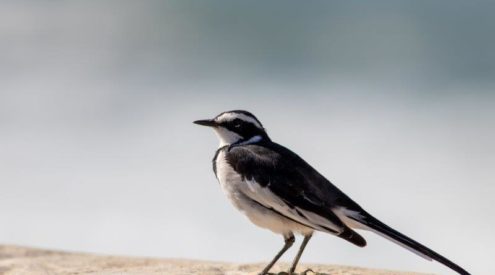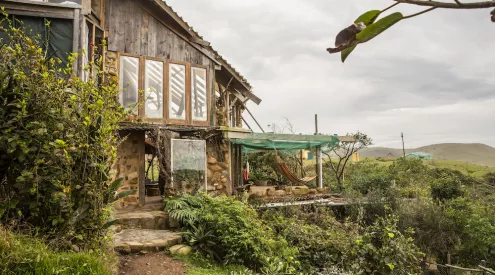There are creatures in nature that live like shadows, moving in reflections and squeezing through cracks in the undergrowth. They might hoot softly and mournfully in the night or through a quiet morning mist, finally revealing themselves as rustling leaves in the undergrowth or twitching reeds on a vlei.
Flufftails are small, rail-like birds (if you don’t know what a rail is, imagine a tiny chicken), and they’re famous for their secretive behaviour. Four species occur in South Africa, with males and females being sexually dimorphic (males have distinctive plumages, with varying amounts of rufous colouration on and around the head and breast, while females are drab and difficult to tell apart).
The most widespread species is the red-chested flufftail, a common resident of dense reed beds and sedges, lurking at the edges of marshes and streams.
The buff-spotted flufftail is locally common in dense forest understorey, adjacent scrub and well-wooded gardens. Its characteristic, low, foghorn-cry of ‘dooooooooooooooooo’ is delivered from an elevated perch at night or from near or on the ground during a cloudy day. The striped flufftail, with males boldly striped in white on a black body and sporting a rufous head, are resident and nomadic in montane grassland and fynbos.
The fourth species is the white-winged flufftail, a bird of upland marshes and vleis, where sedges and aquatic grasses grow in shallow water. It’s South Africa’s most threatened bird and is classified as critically endangered.
This species is a very rare and a localised, non-breeding summer visitor to our region between October and March. It’s believed to arrive from breeding grounds in the Ethiopian Highlands, not far from the capital Addis Ababa, although this hasn’t been proved. Recent statistics put the South African white-winged flufftail population at fewer than 50 individuals.
When you think of the word ‘flufftail’ think of the wonderfully enigmatic wilderness that lies beyond our front doors. Then as you imagine and as you take that in, think of the word ‘extinction’ too.
A future for flufftails?
The white-winged flufftail is the 2013 BirdLife South Africa Bird of the Year. Eskom sponsors the campaign and awareness about these very rare and threatened birds will be created through posters, school lesson plans, the Sasol Bird Fair on 25 and 26 May 2013, newspaper and magazine articles, and radio and TV interviews.
The primary threat to the white-winged flufftail is the loss and reduction in quality of their wetland habitat caused by a list of land-use factors including mining, afforestation, erosion, draining and filling of wetlands, invasive plants and the construction of fences and roads.
The Middelpunt Wetland Trust has been the driving force behind the monitoring and conservation of this particular species in South Africa since its inception in 1992. BirdLife South Africa took over the administration of the trust in 2012 and is now at the forefront of efforts to save the species from extinction.
BirdLife South Africa will be involved in the construction of a breeding facility at Johannesburg Zoo to study the white-winged flufftail’s biology, hopefully recording and describing its call for the first time and laying the groundwork for a future captive breeding programme.
Photo by Warwick Tarboton.


















